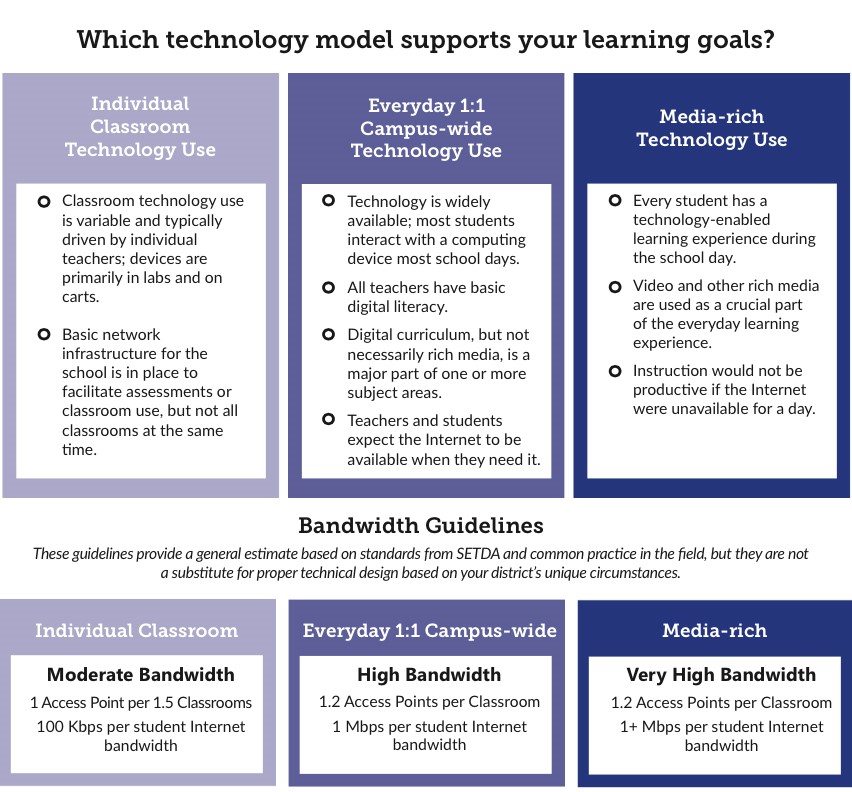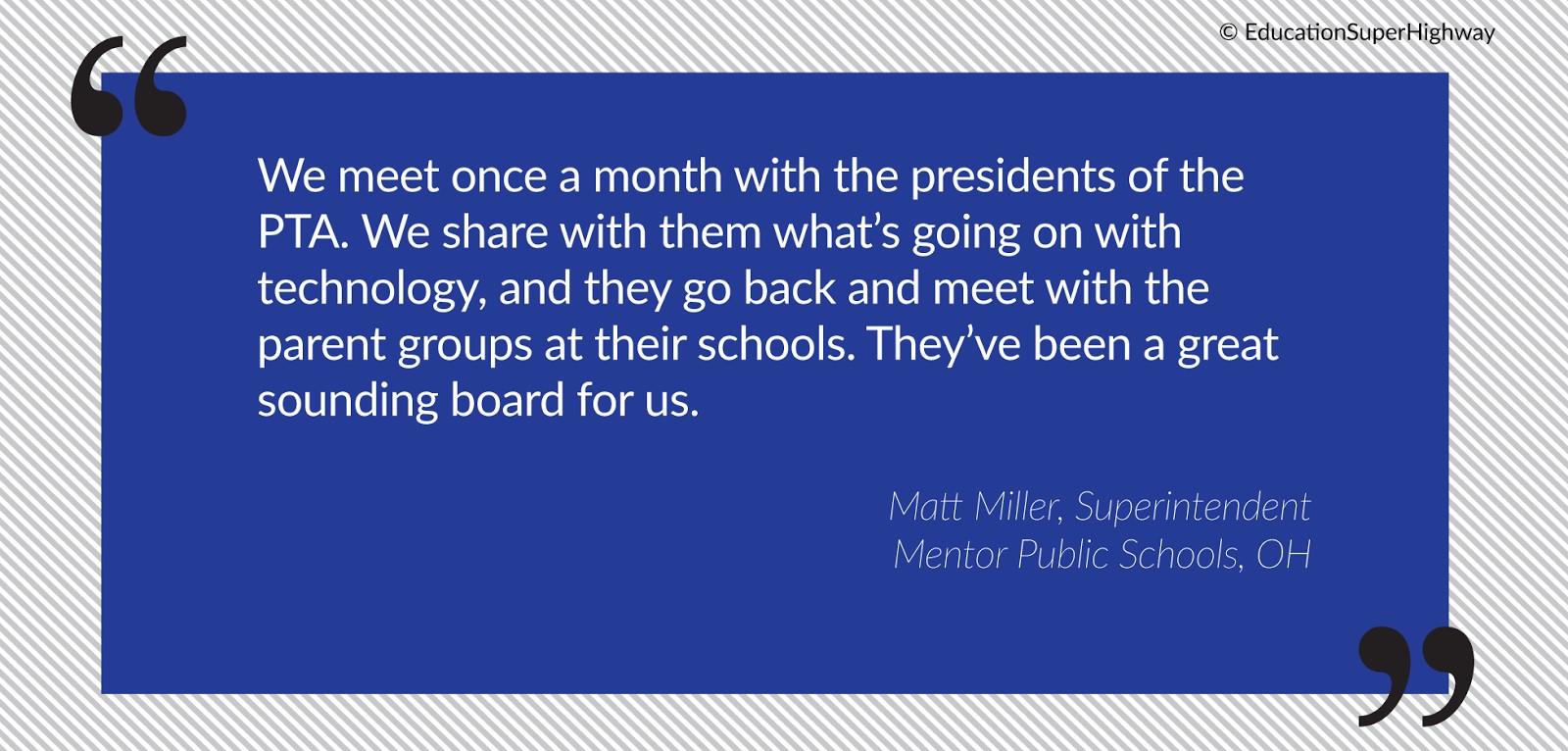Today 63% of schools lack the bandwidth that will allow students to take advantage of the promise of digital learning—that’s over 40 million kids being left behind. Today, to ensure schools have enough bandwidth to implement digital learning initiatives, many school districts must upgrade their network infrastructure. And like any large scale, district-wide project, network upgrades cannot happen without strong leadership from superintendents and other district leaders.
In an effort to help guide district leaders who are embarking on network upgrade projects, EducationSuperHighway compiled tips and best practices from leading superintendents and technology experts from across the U.S. in a free resource,Network Essentials for Superintendents.
Below are the three central requirements of a successful district network as detailed in Network Essentials for Superintendents. Understanding these three requirements will set a district network upgrade project on the right path.
1) Bandwidth to support your learning goals
2) Cost effective pricing
3) Support among key stakeholders
Bandwidth
The first step to identifying your district’s bandwidth need is to have a clear idea of your district’s educational goals and how technology will be integrated to support them. As Rosanna Mucetti, Assistant Superintendent of San Leandro USD shares, “A clear instructional vision for how technology can be used in the classroom is the main driver of your technology plan. We have a strong plan as to how our students in grades K-12 will use devices and platforms to migrate to project- and problem-based learning. Kids can integrate technology in their projects to conduct research, be critical thinkers, and create innovative products that demonstrate what they now know.”
A school district’s educational goals will directly inform the amount of bandwidth necessary to ensure those goals are achieved. For example, if a district plans to implement a 1:1 program, the network must be robust enough to support students and teachers accessing the Internet throughout the day. Below is a chart illustrating various digital education models and the estimated bandwidth needed to support those models.

Cost Effective
School districts across the country pay vastly different prices for similar broadband services. Simply understanding how a district’s pricing compares to a neighboring district and to the state’s benchmarks can help reduce expenses and achieve competitive pricing.
Not only does price transparency help districts understand relative costs, but also taking time to shop around and compare prices between vendors will allow you to negotiate a better deal. Director of Technology for Reynoldsburg City Schools, Will Kerr points out, “The more people you get competing for you as a customer, the better. Don’t just post an RFP; put it on your website, talk to local media. Be very vocal about it. In the end, it’s going to save you big bucks.”
Support
Since the costs and tradeoffs around building school networks are not always obvious to the less tech-savvy, you will need to communicate early and often to all stakeholder groups for feedback, buy-in, and support, just like any other significant district project. Include your vision and plan for the network in your overall technology plan.

For example, Matt Miller, Superintendent of Mentor Public Schools in Ohio makes sure to touch base with community members and the school representatives. “We meet once a month with the presidents of the PTA. We share with them what’s going on with technology, and they go back and meet with the parent groups at their schools. They’ve been a great sounding board for us.”
Building and maintaining a robust network must be addressed when districts embark on new digital programs. It is a crucial component in any comprehensive plan to implement and support digital learning in the classroom
EducationSuperHighway is a non-profit focused on upgrading the Internet infrastructure in K–12 public schools so that all students can benefit from the transformational power of digital learning. The organization works to close the connectivity gap and to upgrade Internet access in every public school classroom in America. Because without that robust access, the best laid plans for a one-to-one or blended learning program cannot be realized.











